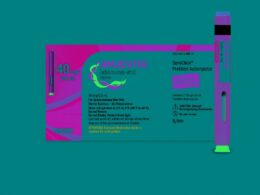Linkedin
Laura Juliano
September 9, 2022
Executive Summary:
Joaquim Cardoso MSc.
health transformation — journal
September 12, 2022
Amidst today’s extreme economic uncertainty …companies should seize the opportunity to evaluate their costs through organizational and operational lenses.
Many clients and colleagues are asking three simple questions as the global economic environment shifts:
- How do we counteract the margin compression of the past few years?
- How should we prepare for a potential upcoming recession?
- What can you offer on cost optimization to address these trends?
Competitive cost advantage is an integrated approach that goes beyond traditional cost management measures.
Four archetypes for building competitive cost advantage
- 1.Redesign your processes and strategic operating model
- 2.Strategically transform operations
- 3.Streamline the organization
- 4.Optimize direct and indirect materials spend
Which archetypes are right for your business?
Five steps for successful cost transformations
Previous crises have taught us that cost transformations have the greatest chances of success when companies follow these five steps:
- Align your executive team
- Dedicate your best people
- Move fast and set ambitious deadlines
- Push transformation deep into the organization
- Keep it simple and transparent
The potential results are enormous:
- Companies can anticipate savings of up to 30% of labor costs, together with lean, automated processes and combined with organizational streamlining.
- When combined with optimization of direct and indirect spend, this archetypes can fund a transformation journey by improving resilience and reducing full operating spend by 15–20%.
- Streamlining can save up to 25% of managerial spend and 10% of G&A expenses by addressing key questions
- A leading US producer of industrial equipment undertook a cost transformation to fund its transition to a digital operating model, and its market capitalization is anticipated to grow more than three times faster than its S&P peer group over the next three years.
ORIGINAL PUBLICATION (full version)

Many of my clients and colleagues are asking three simple questions as the global economic environment shifts:
- How do we counteract the margin compression of the past few years?
- How should we prepare for a potential upcoming recession?
- What can you offer on cost optimization to address these trends?
No one has simple answers to those questions.
But thanks to the efforts of our teams in People and Organization and in end-to-end Operations, we have an approach that helps companies simplify and accelerate their decision-making and focus on achieving a competitive cost advantage.
Competitive cost advantage is an integrated approach that goes beyond traditional cost management measures.
It enables companies to meet the urgent need to expand margins by becoming more cost efficient, but without sacrificing strategic capabilities and priorities such as climate and sustainability, digital, and talent acquisition.
Amidst today’s extreme economic uncertainty — the highest inflation in decades, lingering supply chain distress, commodity price volatility, and sharp shifts in demand — companies should seize the opportunity to evaluate their costs through organizational and operational lenses.
Amidst today’s extreme economic uncertainty — the highest inflation in decades, lingering supply chain distress, commodity price volatility, and sharp shifts in demand — companies should seize the opportunity to evaluate their costs through organizational and operational lenses.

Four archetypes for building competitive cost advantage
Our structured approach to building competitive cost advantage is anchored around four archetypes with clear mandates for action.
The first two are holistic, because they treat cost reduction as an integral part of a plan to make an organization leaner, more resilient, and more efficient.
They take longer to deliver a competitive cost advantage (6+ months), but the prizes are much higher as the company develops strategic capabilities and unlocks strategic growth opportunities.
The latter two archetypes make targeted contributions to the success of the first two archetypes.
They focus on shoring up the bottom line and freeing up resources, and generally yield results within a few months. These archetypes can also be executed standalone to drive fast results on the path to overall efficiency.
- 1.Redesign your processes and strategic operating model
- 2.Strategically transform operations
- 3.Streamline the organization
- 4.Optimize direct and indirect materials spend
1.Redesign your processes and strategic operating model
This archetype — my personal favorite — represents an entirely new approach to cost reduction, because it addresses the present and the future simultaneously: how does a company maintain core functions, but also grow and succeed with a lower cost base?
It is most relevant when significant operating model changes may disrupt existing operational processes.
Our project experience shows that companies can anticipate savings of up to 30% of labor costs, together with lean, automated processes and combined with organizational streamlining.
Our project experience shows that companies can anticipate savings of up to 30% of labor costs, together with lean, automated processes and combined with organizational streamlining.
2. Strategically transform operations
This archetype encompasses several levers, including production efficiency, network optimization, automation, and planning enhancement. It is most relevant for companies that are due for a full operational efficiency reset or for companies that are acutely vulnerable to a downturn due to manufacturing or supply chain limitations.
When combined with optimization of direct and indirect spend, this archetype can fund a transformation journey by improving resilience and reducing full operating spend by 15–20%.
When combined with optimization of direct and indirect spend, this archetype can fund a transformation journey by improving resilience and reducing full operating spend by 15–20%.
3. Streamline the organization
This archetype creates savings to fund growth opportunities by focusing on labor-cost optimization, primarily in the corporate center.
Our project experience shows that streamlining can save up to 25% of managerial spend and 10% of G&A expenses by addressing questions such as:
- Are your managerial spans of control optimal?
- Where is shadow or low-value work occurring?
- Are you sourcing your talent in the most efficient manner regarding geography, in-office vs. virtual, and in-house vs. outsourced resources?
Our project experience shows that streamlining can save up to 25% of managerial spend and 10% of G&A expenses by addressing key questions
4. Optimize direct and indirect materials spend
This archetype helps businesses with strong competition and highly volatile margins reduce addressable procurement spending by around 5–15%, although some categories can deliver much higher savings.
Key questions include:
- How can you streamline demand?
- What are the opportunities to reduce variation?
- Which terms and contracts can you renegotiate?
- Which purchase items can you eliminate entirely?
This archetype helps businesses with strong competition and highly volatile margins reduce addressable procurement spending by around 5–15%, although some categories can deliver much higher savings.
An enduring lesson from previous crises is that achieving a competitive cost advantage enables companies to outperform competitors.
We helped a leading US producer of industrial equipment undertake a cost transformation to fund its transition to a digital operating model, and its market capitalization is anticipated to grow more than three times faster than its S&P peer group over the next three years.

Which archetypes are right for your business?
A company can follow more than one archetype, sequentially or in parallel.
Regardless of their choices, companies need to keep two imperatives in mind.
First, they should not sacrifice the future for short-term results. Instead, they should focus on longer-term, sustainable competitive advantage and resilience.
Second, they should act right now while there is still freedom to maneuver and invest ahead of a downturn.
The choice of archetype depends on your company’s current financial and operational state and your level of resilience, which we define as a company’s capacity to absorb stress, recover critical functionality, and thrive in altered circumstances.
The first two archetypes are the best choices when competitiveness is under threat and a company is burdened by fragmented and cumbersome processes or by supply chain vulnerabilities.
The latter two archetypes apply best in situations when targeted cost reductions can help a company stabilize declining or volatile margins.
Some companies already know which archetypes will serve them best.
For others, validating the choice of archetypes will require a comprehensive cost analysis that structures cost buckets, identifies cost drivers, applies peer benchmarking, and prioritizes areas for improvement and cost optimization.
It normally takes around a month to complete this value discovery effort.
It normally takes around a month to complete this value discovery effort.

Five steps for successful cost transformations
Previous crises have taught us that cost transformations have the greatest chances of success when companies follow these five steps:
- Align your executive team
- Dedicate your best people
- Move fast and set ambitious deadlines
- Push transformation deep into the organization
- Keep it simple and transparent
· Align your executive team: They express commitment and ownership through their visibility, leading by example, and being open to “turning every stone”
· Dedicate your best people: These transformations require top talent and not only whoever is currently available
· Move fast and set ambitious deadlines: Speed is a powerful tool for bypassing resistance, mobilizing the uncommitted, and reducing negative impacts.
· Push transformation deep into the organization: This is a top-to-bottom and end-to-end effort. You need to engage and support teams at all layers
· Keep it simple and transparent: This means you follow one unified approach, aligned on a single source of truth that allows few if any exceptions
Originally published at https://www.linkedin.com.












